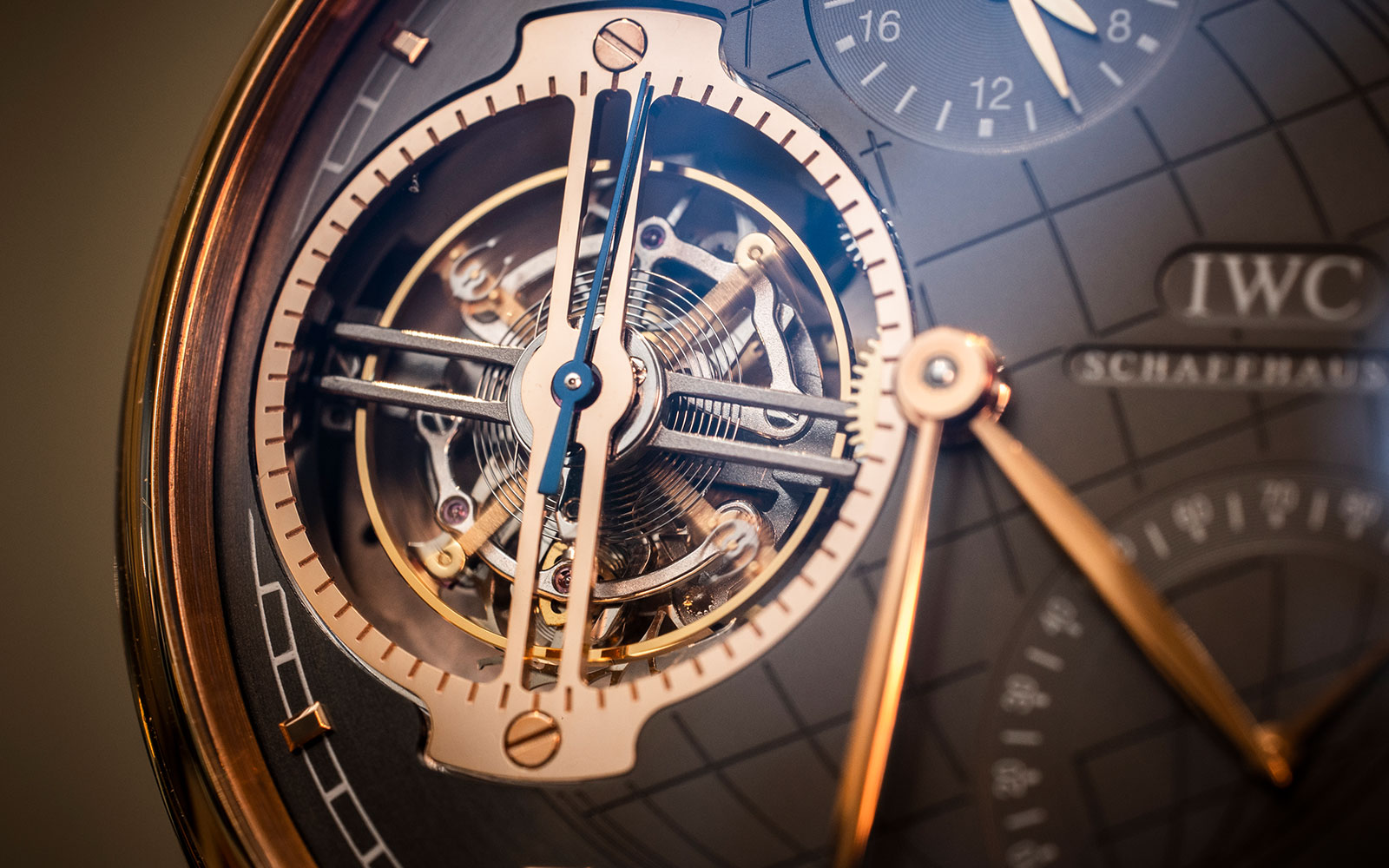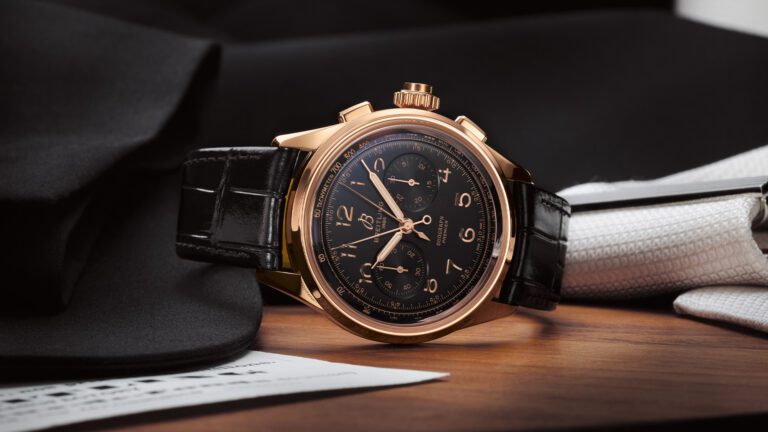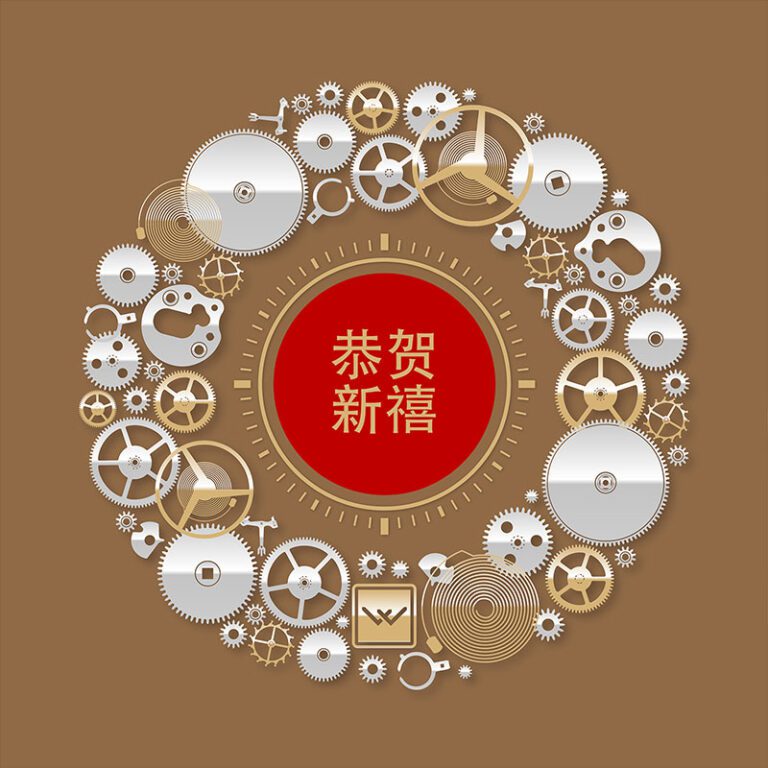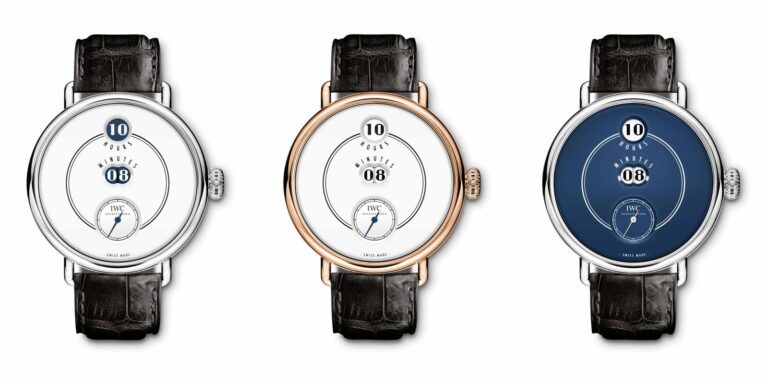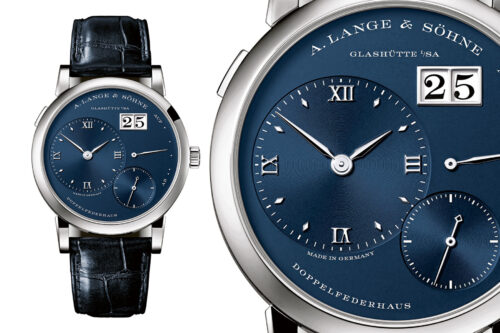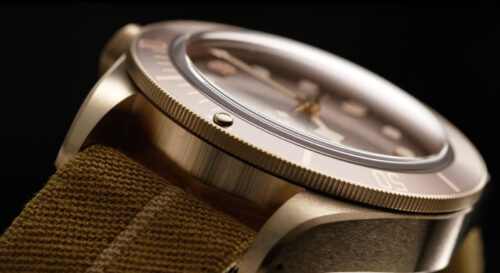The IWC Portugieser Sidérale Scafusia
One of IWC’s most complicated references is at Watches of Switzerland for a limited time.
It is with great excitement that we announce our Watches of Switzerland Sydney Boutique will play host to the truly incredible IWC Portugieser Sidérale Scafusia. For two glorious weeks, you will have the rare opportunity to see this exceptionally complex timepiece in person. The Portugieser Sidérale Scafusia (reference 5041) is the crowning achievement of ten years of development by a team of engineers, watchmakers and scientists. It is the most complicated and exclusive mechanical watch ever made by IWC Shaffhausen. (Due to the enormous amount of work involved, only a few pieces can be produced per year.)
The Portugieser Sidérale Scafusia features both sidereal and solar displays in conjunction with an amazing astronomical module. It literally allows the wearer to carry a piece of the celestial sky on their wrist. The mechanical masterpiece boasts a number of complications and is kept accurate by an integrated tourbillon and constant-force mechanism. (Read on for a full explanation.) On display for two short weeks in our Watches of Switzerland Sydney Boutique, there’s never been a better time to pay us a visit.
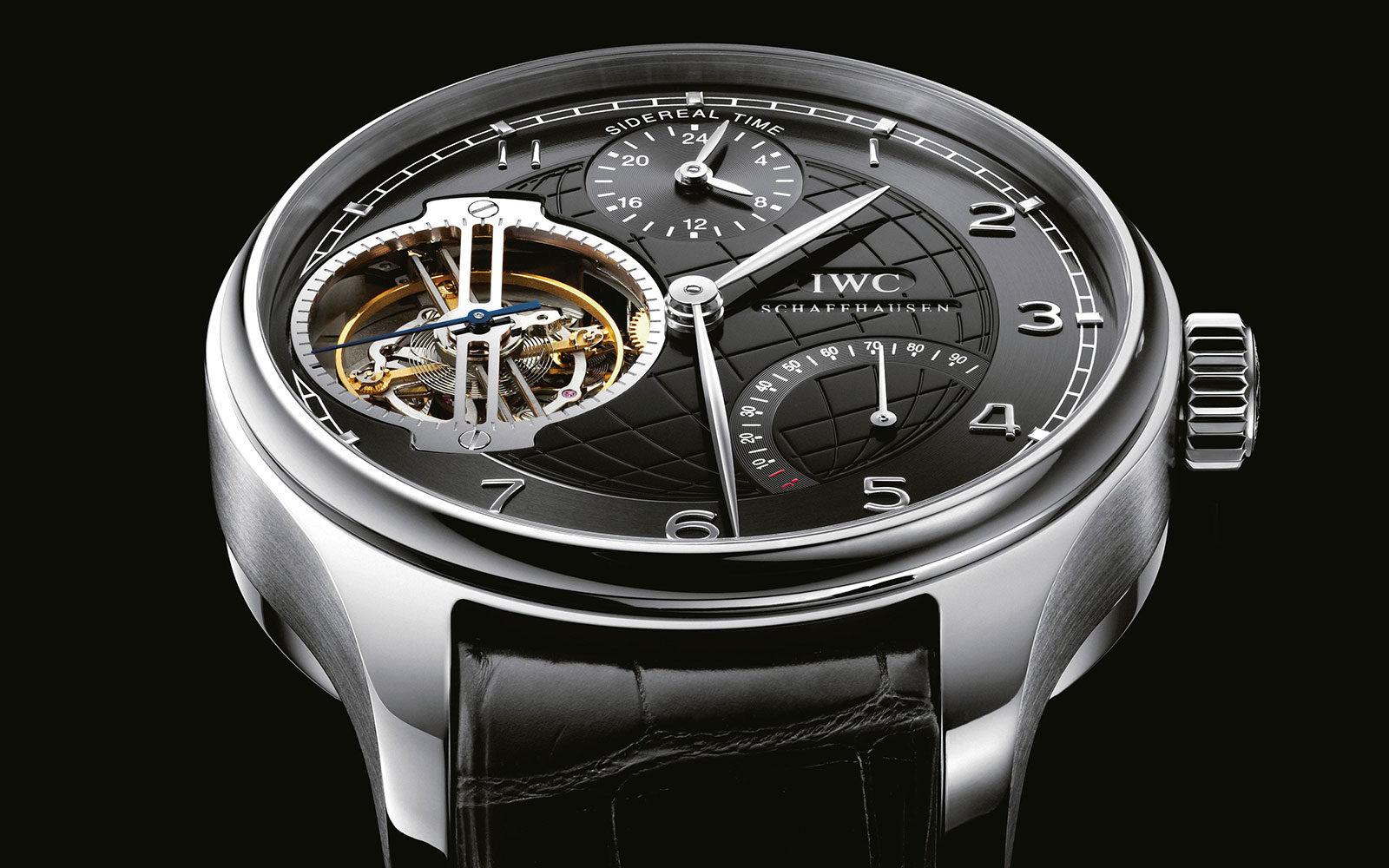
IWC’s most complicated watch ever – exclusively for you
The Portugieser Sidérale Scafusia made its debut in 2011. It took ten years to develop, with some IWC staff dedicating their entire careers since joining the company to its fruition. In addition to its complexity, a high degree of personalisation is incorporated into the concept. The client first nominates a location on Earth to which the corresponding celestial chart is created. The rest of the timepiece is then built around that. Furthermore, the Portugieser Sidérale Scafusia is customisable in over 200 individual configurations (case materials, dials, appliqués and strap etc.). Each piece produced is unique. Assigned its own article number, specific components list and watchmaker.
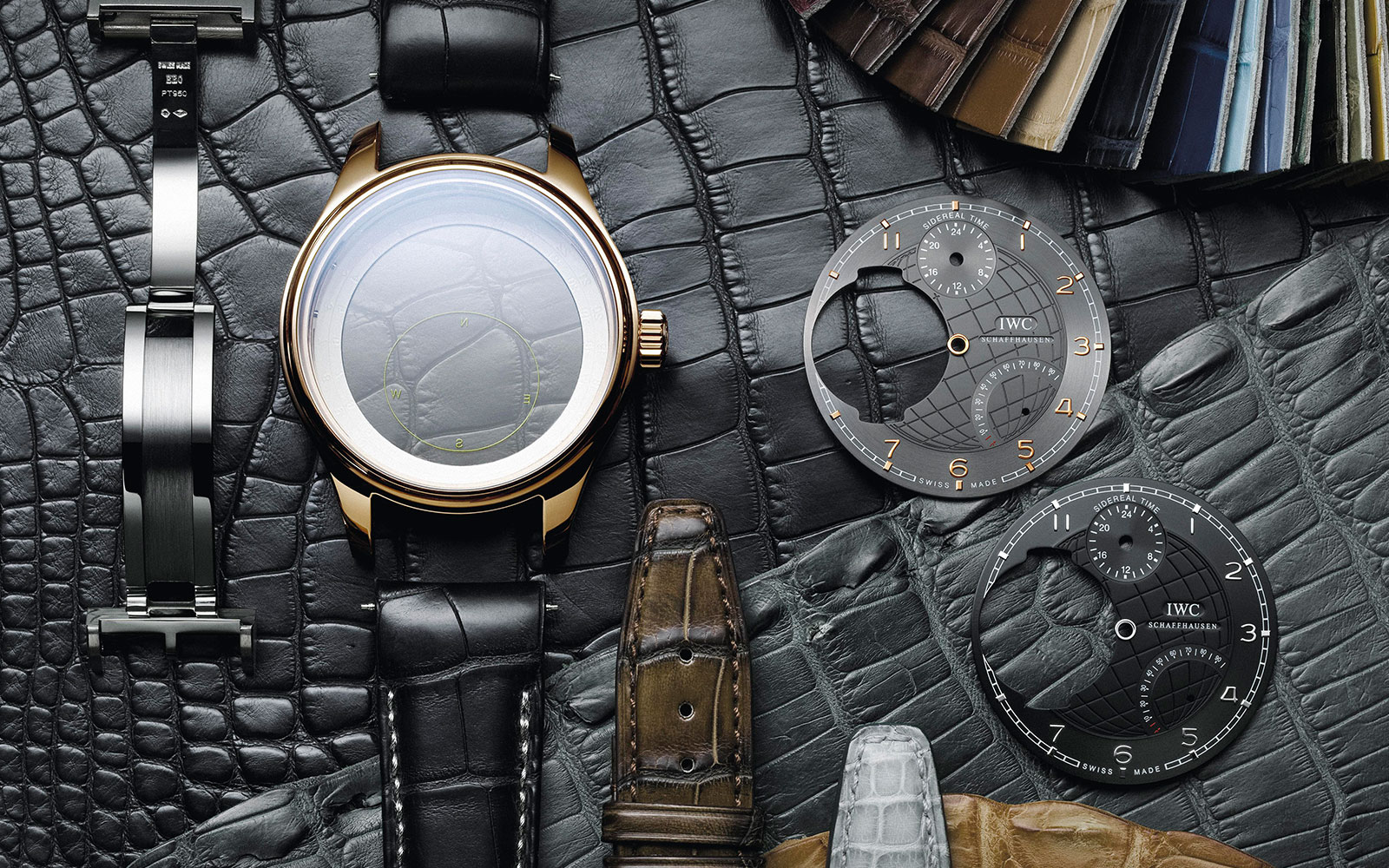
The 46mm Portugieser Sidérale Scafusia is an astronomical time masterpiece. Information is displayed on both sides of the case. The front, in the style of a classic Portugieser, shows both solar and sidereal time, as well as the tourbillon with integrated constant-force mechanism and 96-hour power reserve indicator. The back functions as a personalised astronomical instrument based on a geographical location of the owner’s choosing. At any given time, it displays the constellation of stars visible overhead. It also indicates solar and sidereal time, sunrise, sunset, day, night and twilight, absolute day of the year (accounting for leap years) and compensates for daylight savings. At 17.5mm, the height of the case is relatively modest, considering.
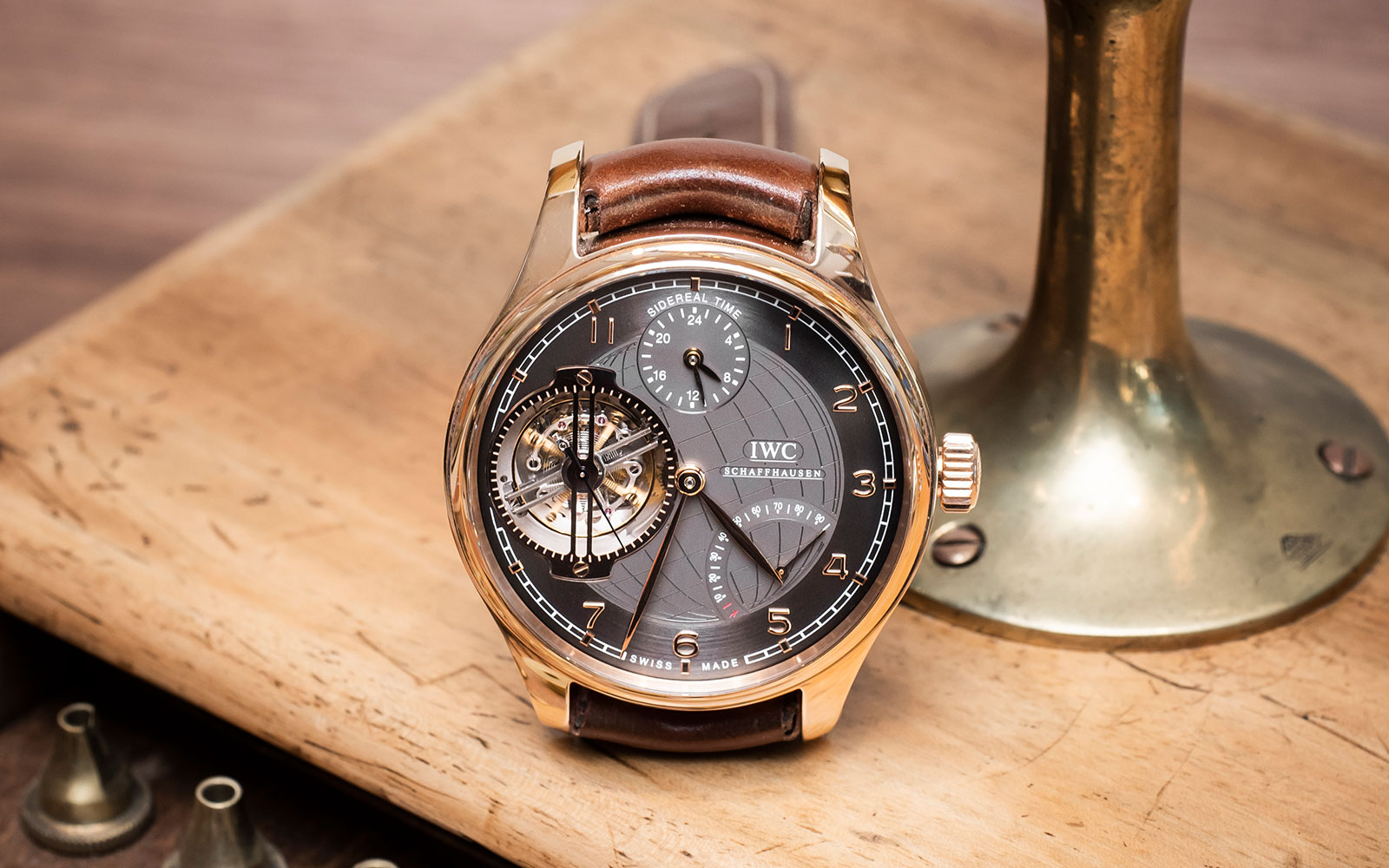
The Time According to the Stars
As the earth rotates on its axis, it is also orbiting the sun. Over the time it takes to complete one rotation, it has moved into a new position and the angle to the sun has changed. So that the sun appears exactly overhead at 12 noon each midday, an extra 3 minutes and 55.9 seconds needs to be added to the time of one full rotation (to regain the same angle). This gives us the 24-hour solar day that normal watches and clocks display. However, the earth’s position in relation to the fixed stars is determined by its exact 360 degree rotation time of 23 hours, 56 minutes and 4.1 seconds. The sidereal day, as it is known, is important to astronomers. Among other things, it is needed to find the same star each night in the same position.
The Portugieser Sidérale Scafusia not only tracks sidereal time but the position of the stars in the observable sky overhead for a fixed location on the earth’s surface. IWC calculates, to the metre, the grid reference of the customer’s chosen location – say the middle of Sydney Harbour Bridge. From this, it produces the corresponding night-sky disc showing more than 500 stars and constellations with such detail and precision that it would quicken the pulse of any astronomer. The night-sky disc (viewed on the rear of the wristwatch) rotates to depict the current arrangement of stars for its defined location. The sidereal time is then set to the unique celestial chart and indicated (along with solar time) on a 24-hour scale. Setting of both time measurements takes place on the dial side.
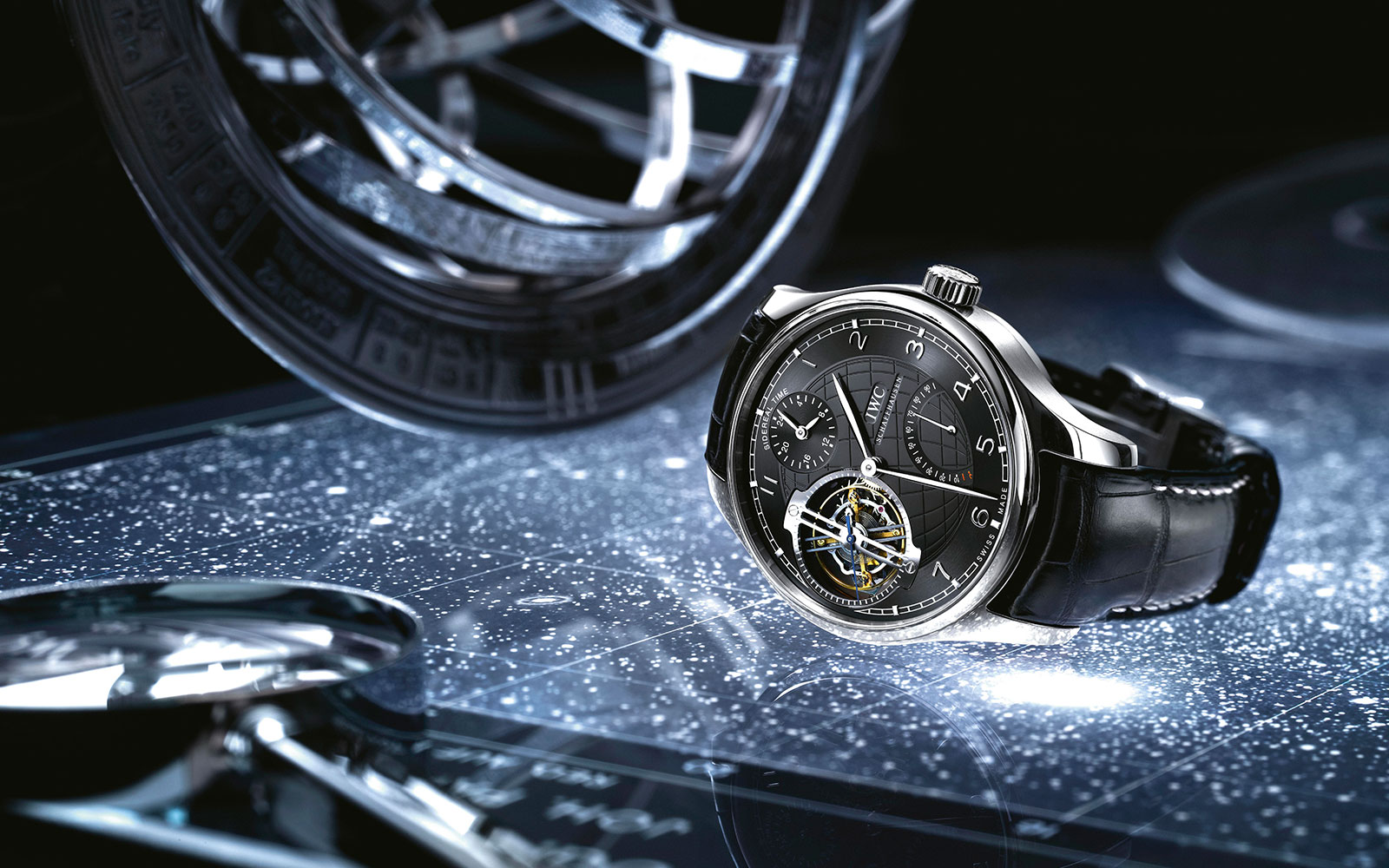
Everything starts from the front
The watch face of the Portugieser Sidérale Scafusia takes its inspiration from one of IWC’s oldest and best-known watch families. (Now with more than 75 years of history behind it.) The Portugieser is the brand’s flagship model for incorporating technical tours de force of haute horlogerie. Its generous case size, due to originally housing large pocket watch movements, makes it the logical choice for the Sidérale Scafusia’s needs. While its clearly organised dial lends itself to legibility and remains a design icon. The traditional display originating from the late 1930s is used to show mean solar time. Hours and minutes are represented by the signature Arabic numbers and railway-track chapter ring, indicated to by slim feuille hands.
At the 9 o’clock position sits the heart of the timepiece, elegantly combining two complications that serve to increase its precision. The constant-force tourbillon also incorporates the seconds hand, making it jump once a second. A 96-hour power reserve indicator sits between 4 and 5 o’clock, with the last five hours marked in red. Mean sidereal time is shown in hours and minutes in a totaliser at 12 o’clock. Like solar time, it is divided into 24 hours, however takes approximately four minutes less to complete a full revolution. The 24-hour display differs by just 11.5 seconds per year from real star time. Solar and sidereal time (including the celestial chart) are set simultaneously for both sides of the wristwatch when the dial displays are adjusted (via the crown).
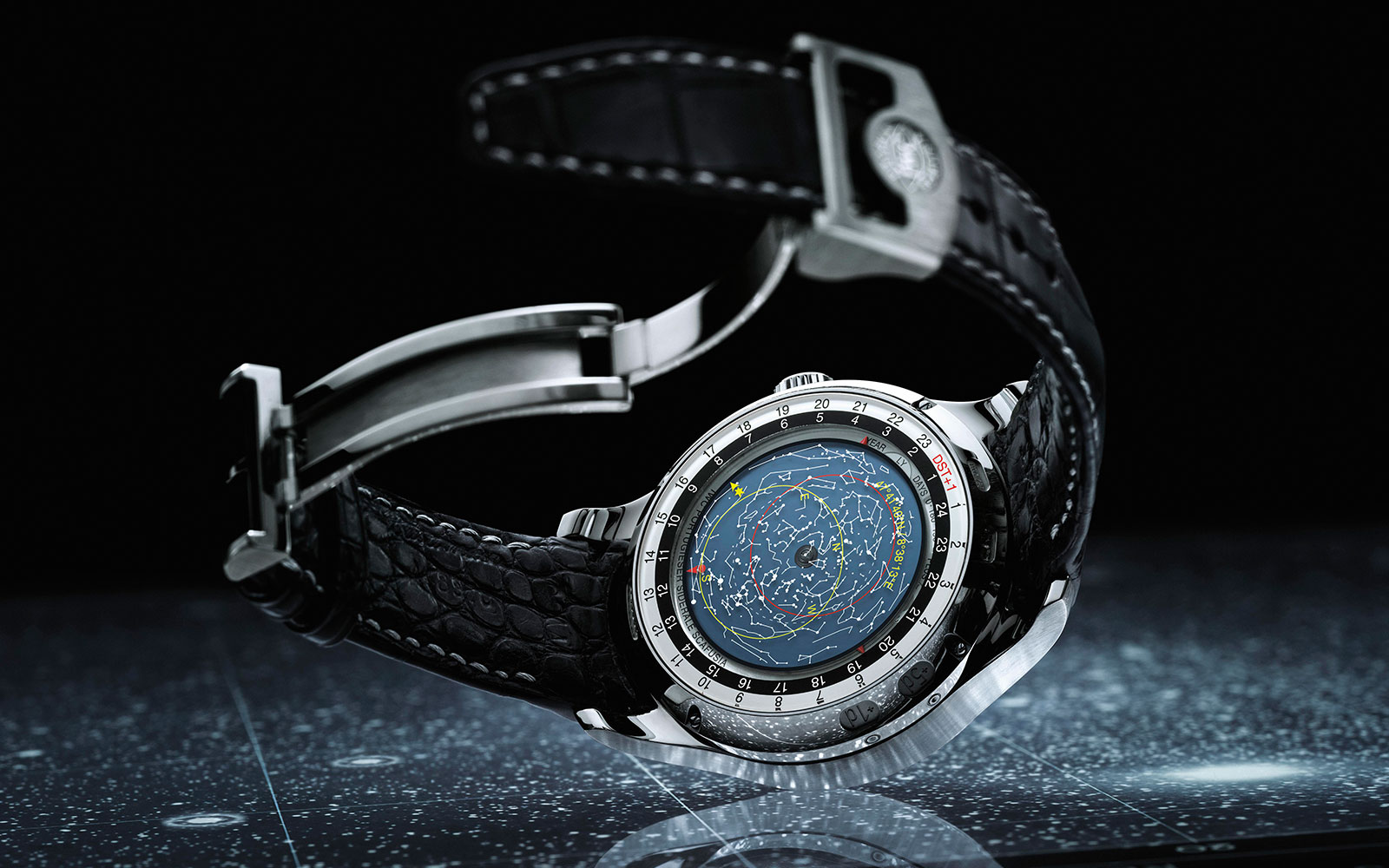
An Astronomical module
The reverse side of the Portugieser Sidérale Scafusia is an astronomer’s fantasy. The celestial chart measuring 28mm is made in-house as a complex, four-colour print. The current night sky (or the stars which would be visible during the day if it weren’t so bright) is depicted within the yellow horizon with compass points provided. The horizon is itself fixed and the celestial chart rotates beneath it, taking precisely 23 hours, 56 minutes and 4.1 seconds to complete a full revolution, in accordance with the sidereal day. Stars rising in the real star-studded sky rotate into the horizon while those setting glide gradually out. In addition to the horizon, the celestial equator and the ecliptic are also given.
The horizon depends on the latitude (degrees north or south of the equator) of the wearer’s predefined ‘home’ location. Latitude and longitude coordinates for each owner’s chosen location are stated (in yellow) across the top of the celestial chart. The longitude (degrees east or west of Greenwich) affects the sidereal time, indicated by a yellow hand with a star. Solar time is indicated by a red hand with a dot. Both are read on the external 24-hour ring. Together with the celestial chart, the yellow hand showing sidereal time revolves in a clockwise direction in the southern hemisphere or anticlockwise in the northern hemisphere. The display is protected by a convex sapphire glass of hardness grade 9 on Mohs’ scale, which can only be scratched by diamonds, other sapphires or carborundum.
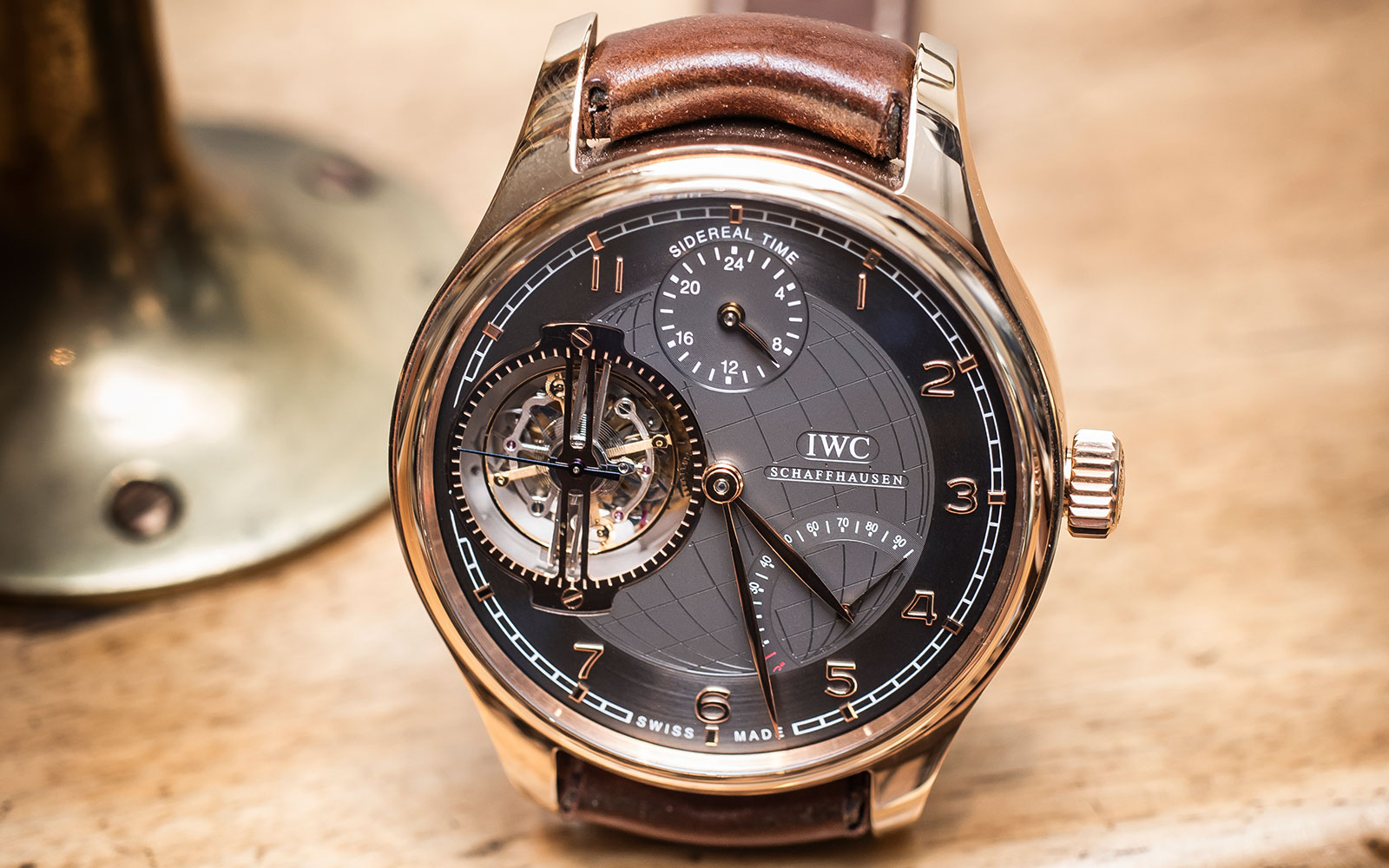
Sunrise and sunset are also calculated for the owner’s chosen location and read with the help of red hands on the external 24-hour ring. Linked to the date, necessary allowances are made for summer time and winter time. A red hand showing sunrise is located on the right-hand side between the celestial chart and 24-hour ring, moving up and down during the course of a calendar year. Likewise, on the left-hand side, a red arrow shows sunset and adjusts accordingly. The outer ring marked “DST+1” is provided for reading sunrise and sunset during daylight savings. During sunrise and sunset, the colour of the background to the stars changes. The ‘twilight display’ lasts approximately 1- 2 hours. Shifting from a pale grey night-time sky to a bright blue daytime sky.
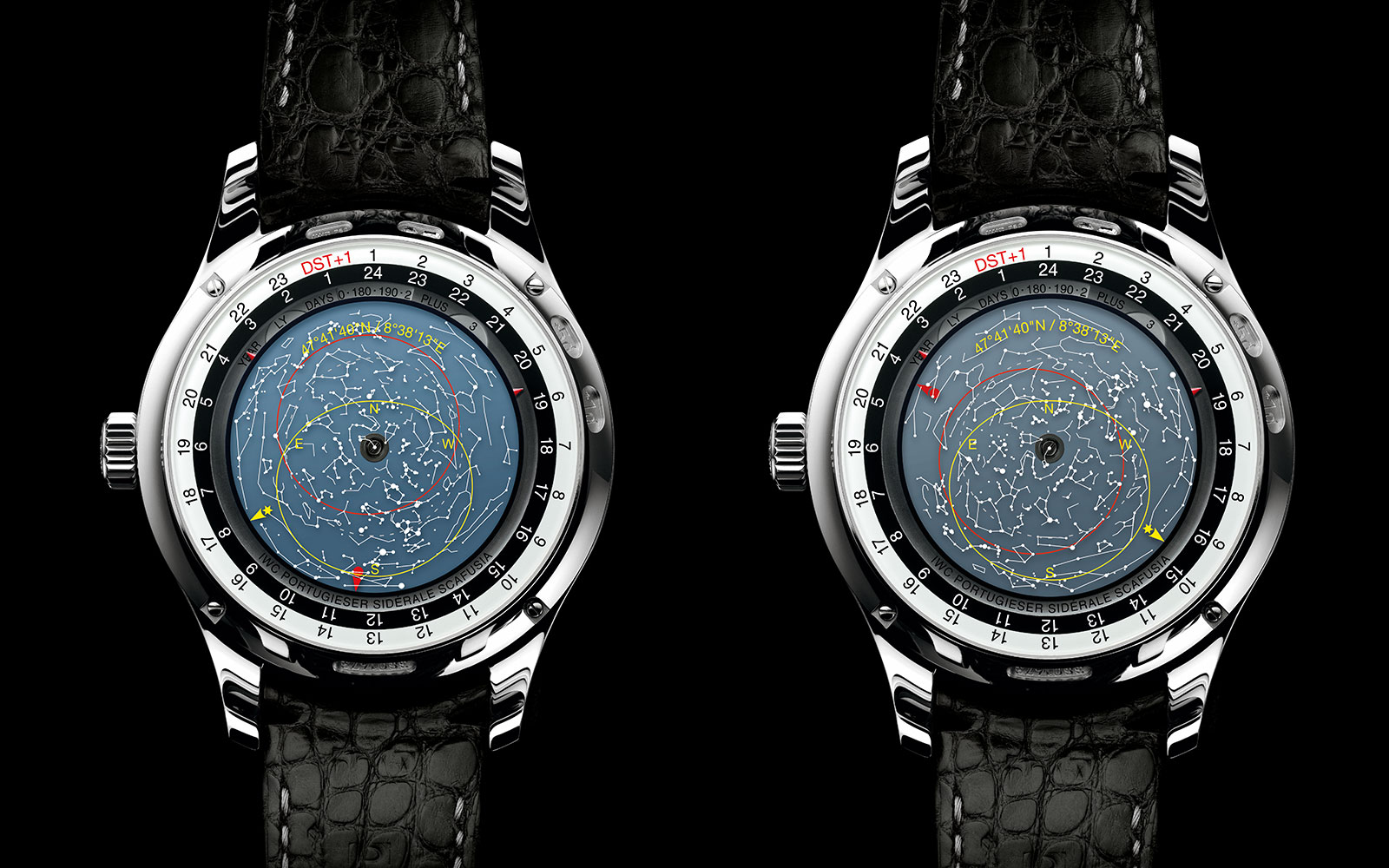
Located between the celestial chart and 24-hour ring (at the top) is the perpetual calendar. IWC’s revolutionary complication was originally designed in the early 1980s by former chief designer Kurt Klaus. It has been continuously improved upon since. For the Portugieser Sidérale Scafusia, the perpetual calendar gives the absolute day of the year, automatically accounting for leap years. It’s mechanically programmed for 577 years. A leap year is indicated by the letters “LY” in the year display on the left-hand side. (Followed by 1, 2, 3, and then repeated.) The number of the day is shown on the five-digit day counter disc (centre) and the single-digit day counter disc (right). The two figures are added together. (For example “30” plus “2” = day number 32/ the 1st of February.)
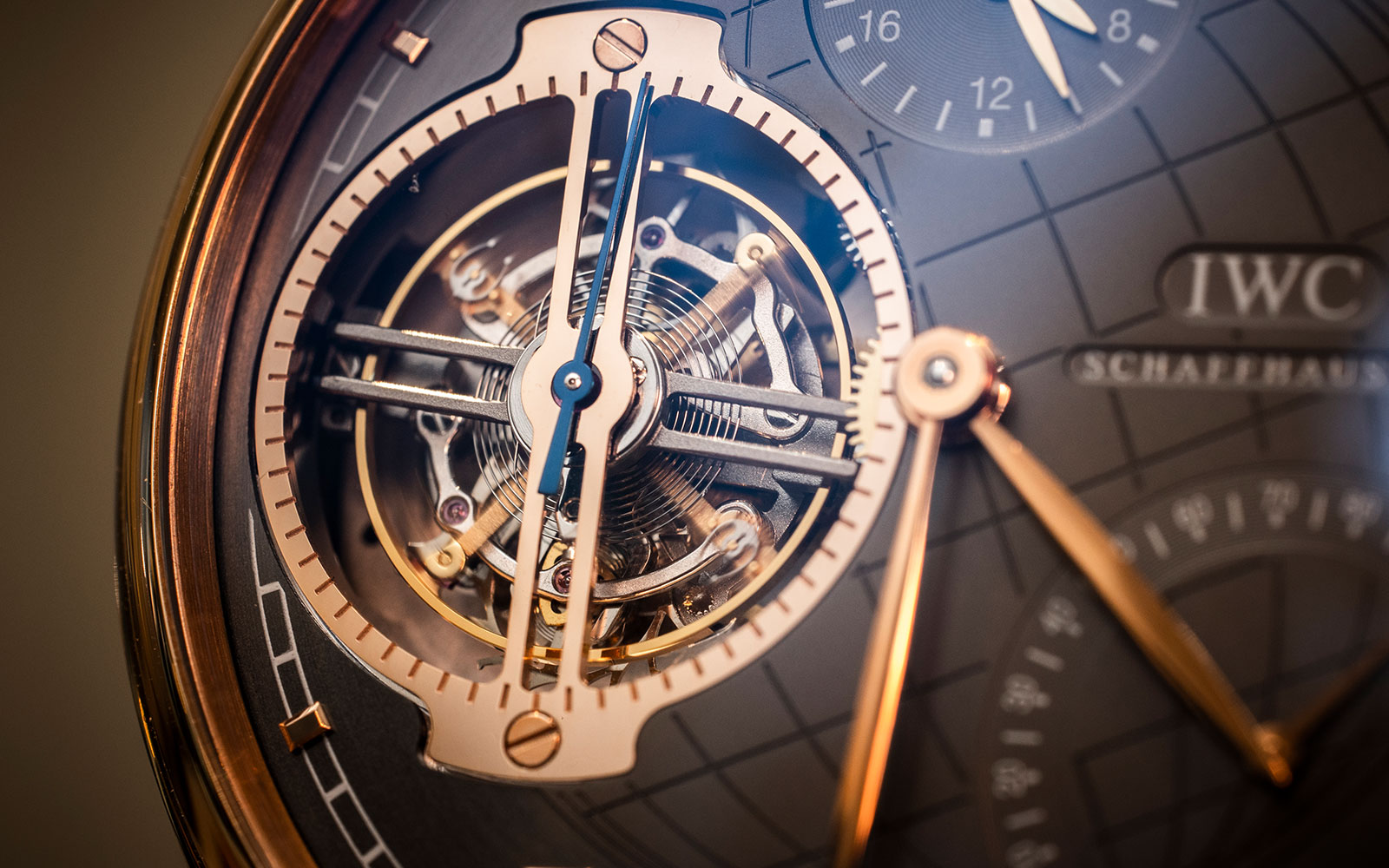
A Patented constant-force tourbillon
To increase timekeeping precision, the Portugieser Sidérale Scafusia employs a tourbillon and a constant-force mechanism. IWC’s patented design combines the two complications into one. The tourbillon’s role is to counterbalance the one-sided pull of the earth’s gravity on the balance. The constant-force mechanism ensures that the amplitude of the balance – and thus the wristwatch’s accuracy – remain absolutely constant for at least two days. It disengages the escapement from the direct flow of power (from the wheel train) and transmits completely even impulses to the escape wheel. (Otherwise fluctuations can occur from the declining torque of the mainspring as it winds down.) In conjunction with the tourbillon, this achieves a very high level of precision.
The constant-force mechanism works by temporarily storing energy in a balance spring. And then dispensing it to the escape wheel. The tension in the spring is increased once a second and, in the process, advances the second hand in the tourbillon in one-second increments. The constant-force mechanism will operate for at least 48 hours. If the energy stored in the movement barrels is no longer sufficient, the Portugieser Sidérale Scafusia automatically switches to 18,000 vph (2.5 hertz) frequency. You can tell if the constant-force mechanism is engaged because the tourbillon advances in one-second jumps. In ‘normal mode’, the second hand moves continuously. And the complication functions like a conventional tourbillon.
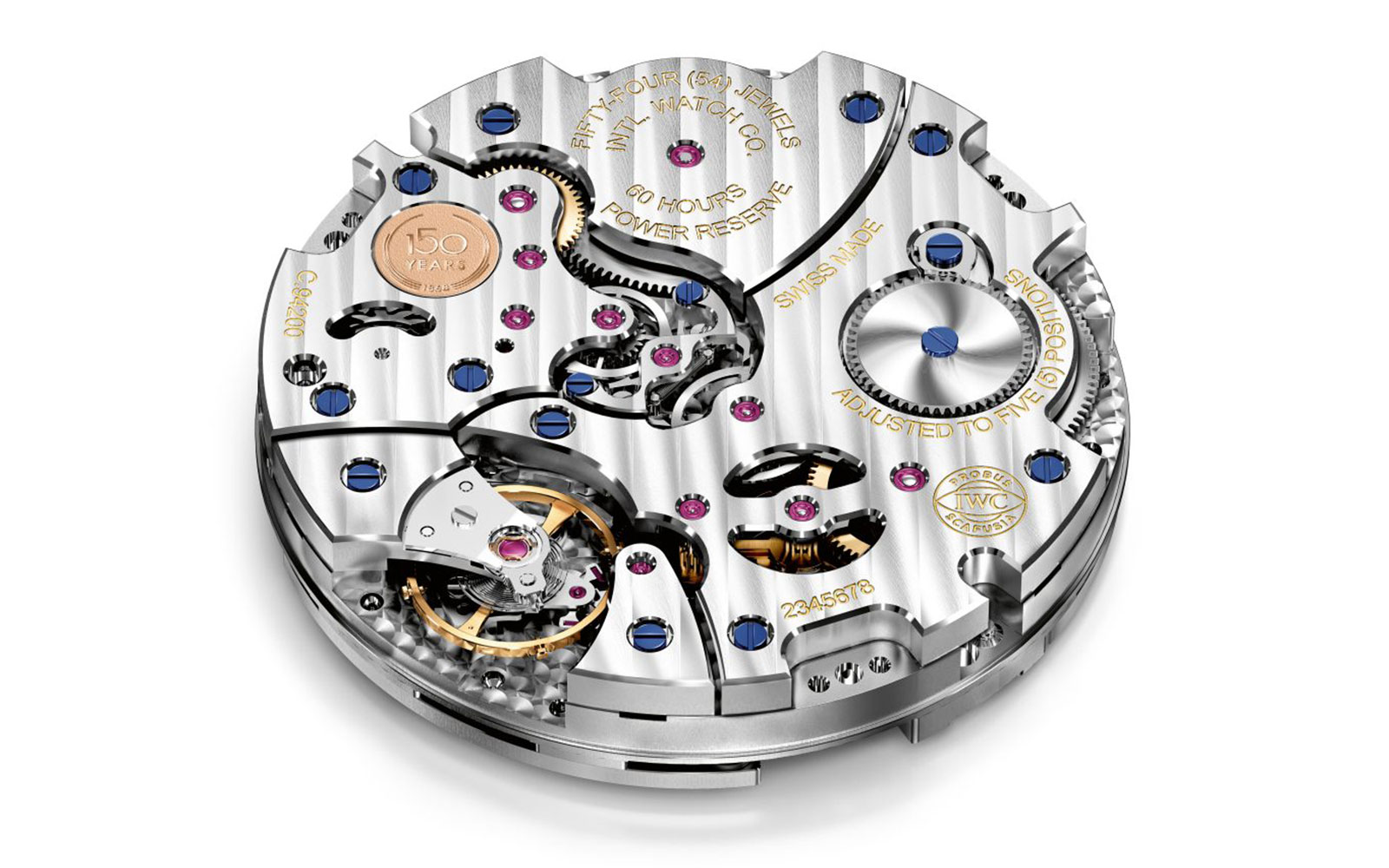
The 94900 Calibre
The 94900-calibre is an IWC-manufactured movement belonging to the 94000 calibre family (shared with the Pallweber). Fully wound, the manual-winding mechanical movement has a power reserve of 96 hours. It features two barrels to provide energy for the different complications. This includes the constant-force tourbillon and astronomical module. The movement is rhodium-plated and sand-blasted and uses 56 jewels.
Time setting of both solar and sidereal times, as well as winding is performed by the crown. Calendar setting is performed by corrector pushers (with a provided tool), in 1 or 5-day increments. The date change occurs at midnight of solar time. (A wristwatch as complex as the Portugieser Sidérale Scafusia requires some rules to be followed in setting and adjusting for travel.)
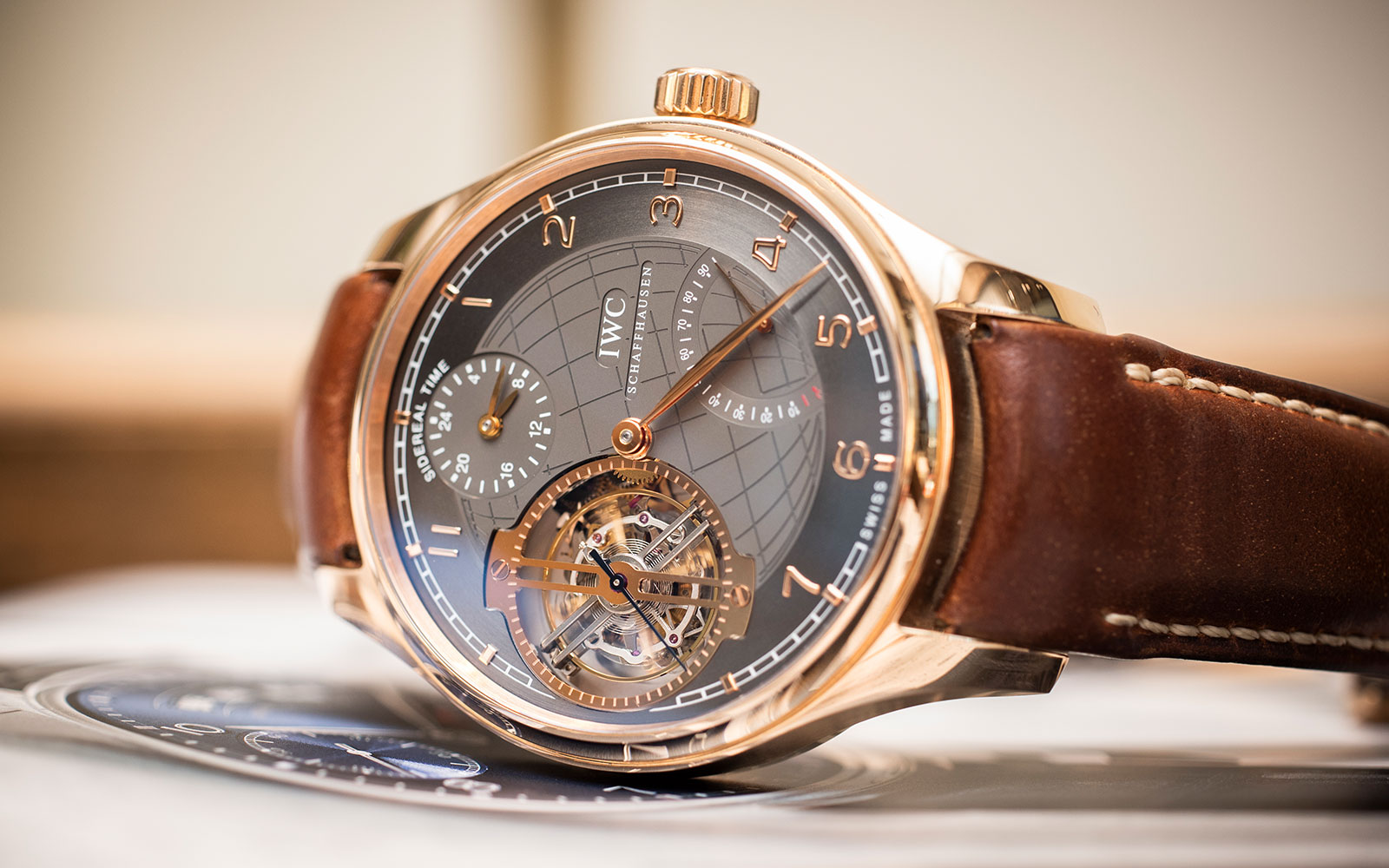
See It For Yourself
The IWC Portugieser Sidérale Scafusia is on display for two weeks only at our Watches of Switzerland Sydney boutique. Don’t miss your chance to see this incredible example of mechanical ingenuity in the flesh. Visit the Boutique today.








 Rolex
Rolex Blancpain
Blancpain Breguet
Breguet Breitling
Breitling Cartier
Cartier Hublot
Hublot Vacheron Constantin
Vacheron Constantin IWC Schaffhausen
IWC Schaffhausen Jaeger-LeCoultre
Jaeger-LeCoultre OMEGA
OMEGA Panerai
Panerai Roger Dubuis
Roger Dubuis TAG Heuer
TAG Heuer Tudor
Tudor FOPE
FOPE Agresti
Agresti L’Épée 1839
L’Épée 1839 Scatola
Scatola



